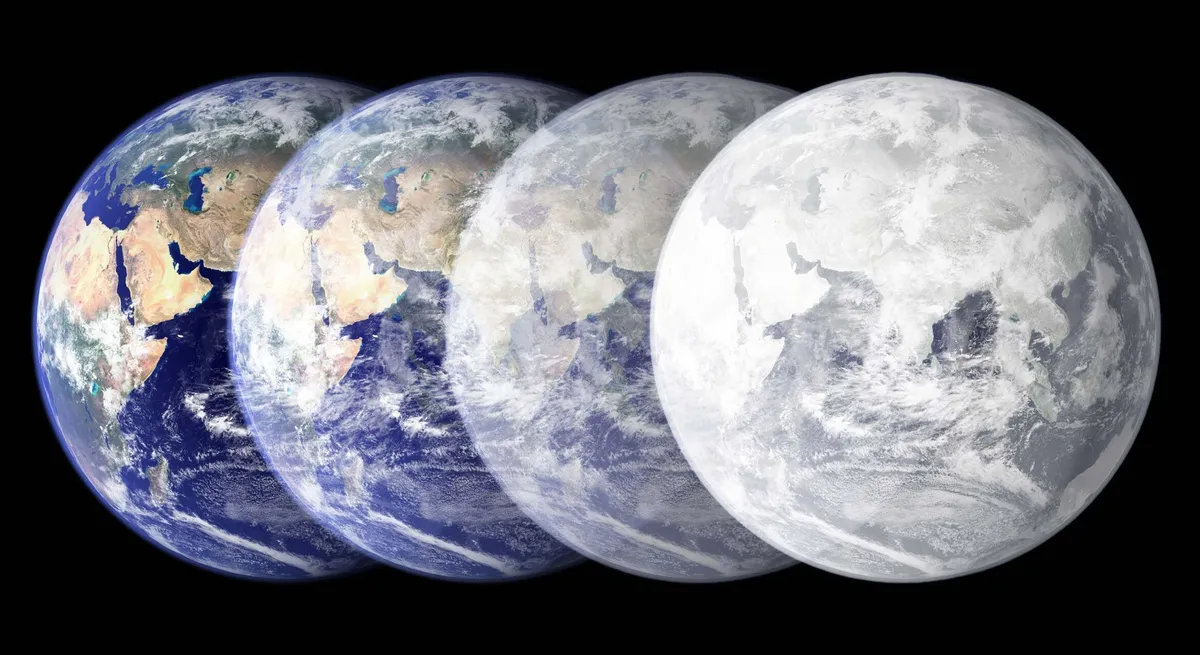
Beginning around 2.5 million years ago, Earth entered a significant era defined by a series of ice ages and interglacial periods. This climatic transformation culminated in the last glaciation, which gradually ended approximately 11,700 years ago. Recent research published in the journal Science posits that the next ice age could potentially commence in about 10,000 years.
An international team, including researchers from UC Santa Barbara, conducted this groundbreaking analysis. Their predictions stem from a novel interpretation of the subtle variations in Earth's orbit around the sun, which have profound implications for the planet's climate over millennia. The study meticulously tracks the natural climate cycles of Earth spanning the last million years, shedding light on the intricate dynamics of our planet's climate system.
The researchers examined a comprehensive million-year record of climate change, focusing on shifts in the size of land-based ice sheets in the Northern Hemisphere, as well as the temperature of the deep ocean. By correlating these changes with minor cyclical variations in the shape of Earth's orbit, its axial tilt, and its wobble, the team uncovered a predictable pattern regarding the timing of climate shifts between glacial periods and warmer interglacial periods.
Co-author Lorraine Lisiecki, a professor in UCSB's Earth Science Department, emphasized, "We found a predictable pattern over the past million years for the timing of when Earth's climate changes between glacial 'ice ages' and mild warm periods like today, known as interglacials." The research revealed that specific changes in Earth's orbit were directly responsible for the onset and conclusion of ice ages.
For over a century, scientists have hypothesized a relationship between Earth's orbit and climate fluctuations between glacial and interglacial conditions. However, it wasn't until the mid-1970s that real-world data began to substantiate these theories. Despite this progress, accurately pinpointing which orbital parameters most significantly impacted glacial cycles remained a challenge due to the complexities of dating climatic changes from such distant epochs.
The research team successfully navigated these challenges by analyzing the structure of the climate record over time. This innovative approach allowed them to understand how various orbital parameters interact to produce the observed climate changes.
The authors concluded that each glaciation of the past 900,000 years follows a discernible pattern. Their findings suggest that, in the absence of human-induced greenhouse gas emissions, we should currently be experiencing a stable interglacial period, with the next ice age expected to begin approximately 10,000 years from now. Lead author Stephen Barker from Cardiff University noted, "This pattern is so reproducible that we were able to accurately predict when each interglacial period of the past million years occurred and how long each lasted."
This research underscores the significance of understanding natural climate change cycles, illustrating that they are largely predictable rather than random. According to co-author Chronis Tzedakis from University College London, these findings contribute to a unified theory of glacial cycles and provide an initial prediction regarding the transition back to a glacial state.
Despite the prediction of a future ice age, co-author Gregor Knorr from the Alfred Wegener Institute cautioned that such a transition in 10,000 years is highly unlikely due to human carbon emissions, which have already altered the climate trajectory with potential long-term ramifications.
The research team aims to build upon their findings by establishing a baseline for Earth's natural climate over the next 10,000 to 20,000 years. By calibrating past climate changes and integrating climate model simulations, they hope to quantify the long-term effects of human-made climate change on the planet.
As Barker remarked, "Now we know that climate is largely predictable over these long timescales, we can use past changes to inform us about potential future scenarios." This newfound confidence in predicting climate changes is crucial for guiding current decisions regarding greenhouse gas emissions, which will ultimately shape our planet's climatic future.